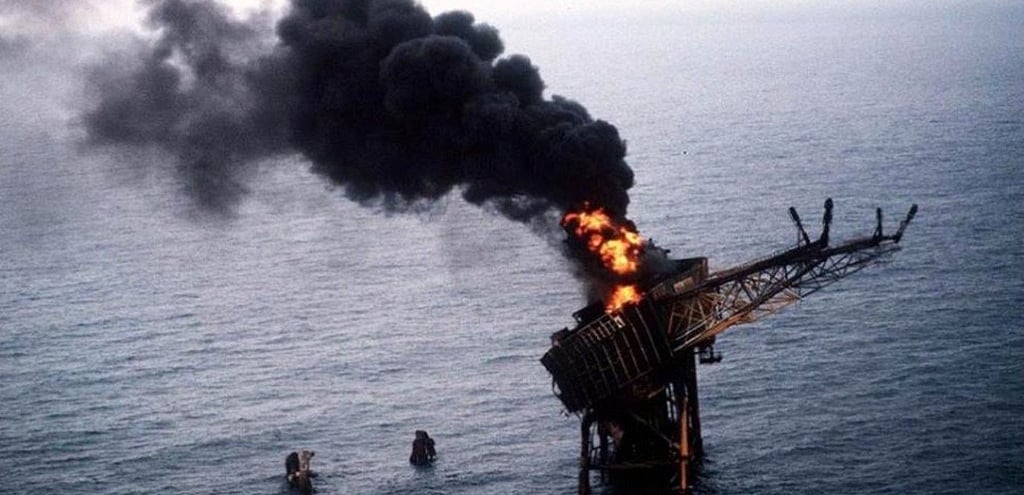What went wrong: Pipa Alpha
Pipa Alpha oil platform disaster remains one of the deadliest offshore oil rig accidents, but why? What lessons have we learned in the wake of this historic catastrophe?
ENVIRONMENTAL DISASTERS


Pipa Alpha 1988: A Tragedy in the North Sea
Introduction
The Pipa Alpha oil platform disaster, which occurred in 1988, remains one of the deadliest offshore oil rig accidents in history. Located in the North Sea, approximately 120 miles northeast of Aberdeen, Scotland, the Pipa Alpha platform was operated by Occidental Petroleum. The catastrophe that struck on July 6, 1988, resulted in the loss of 167 lives and caused significant environmental and economic damage. This article delves into the factors that led to the disaster, the immediate aftermath, and the lessons learned from this tragic event.
Background
Pipa Alpha was a key asset in the Piper oil field, producing over 300,000 barrels of oil per day. Commissioned in 1976, it was a complex structure comprising production, drilling, and accommodation modules. Although very little evidence remained several flaws are believed to contribute towards the disaster.
The Catastrophe Unfolds
On the evening of July 6, 1988, routine maintenance on a condensate pump was being carried out. The pump's pressure safety valve had been removed for servicing and was replaced with a blind flange, which was not properly documented. When the night shift started, the replacement of the valve was not communicated, and the pump was inadvertently switched on.
This led to a massive gas leak. Within minutes, the highly flammable gas ignited, causing a series of explosions that engulfed the platform in flames. The initial blast was followed by several others as the fire spread to oil and gas pipelines. The situation was exacerbated by the failure of the platform’s firefighting systems and the lack of an effective evacuation plan.
Factors Leading to the Disaster
Maintenance Failures: The improper handling of the pressure safety valve during routine maintenance was a critical error. The lack of proper documentation and communication between shifts played a significant role in the initial gas leak.
Safety System Deficiencies: The platform’s safety systems were inadequate. Firefighting equipment was not fully functional, and the control room, which housed emergency shutdown controls, was destroyed in the initial blast.
Design Flaws: The platform's design did not adequately separate high-risk areas from safety-critical areas. The close proximity of the accommodation module to the production and drilling modules proved fatal.
Emergency Response: The emergency response procedures were insufficient. Many lifeboats were inaccessible due to the fire, and the helicopter deck was unusable. As a result, many workers were trapped with no means of escape.
Regulatory Oversight: At the time, regulatory oversight was less stringent, and there were gaps in the enforcement of safety standards. This lack of oversight allowed unsafe practices to continue unchecked.
Aftermath
The immediate aftermath of the Pipa Alpha disaster was chaotic. Rescue efforts were hampered by the intense heat and the continued explosions. Due to the disaster 167 lost their lives. The platform continued to burn for weeks, and the remnants eventually sank into the North Sea.
The disaster prompted a comprehensive inquiry, led by Lord Cullen, resulting in the Cullen Report. The report highlighted the numerous failings and made 106 recommendations aimed at improving safety in the offshore oil and gas industry. These recommendations led to significant changes in regulations, safety practices, and the design and operation of offshore installations.
Lessons Learned
The Pipa Alpha disaster served as a wake-up call for the oil and gas industry. The following key lessons were learned:
Enhanced Safety Protocols: The importance of rigorous safety protocols and regular maintenance checks became evident. Companies adopted more stringent safety measures and improved communication between shifts.
Improved Design Standards: The disaster underscored the need for better design standards to ensure critical areas are protected and separated from high-risk zones.
Effective Emergency Response: The need for robust emergency response plans and regular drills was emphasised. Ensuring all personnel have clear escape routes and access to safety equipment became a priority.
Stronger Regulatory Framework: The Cullen Report led to the establishment of the Health and Safety Executive (HSE) in the UK, which introduced more stringent regulations and oversight to ensure compliance with safety standards.
Culture of Safety: The disaster highlighted the need for a cultural shift within the industry to prioritise safety over productivity. Companies began fostering a culture where safety is seen as everyone's responsibility.
Conclusion
The Pipa Alpha disaster of 1988 was a tragic event that claimed many lives and exposed significant flaws in the offshore oil and gas industry. However, it also led to substantial improvements in safety standards and practices. The lessons learned from this catastrophe continue to influence the industry, ensuring that the sacrifices of those who perished were not in vain. Today, the legacy of Pipa Alpha serves as a stark reminder of the importance of vigilance, communication, and a relentless commitment to safety in preventing such disasters from occurring again.






